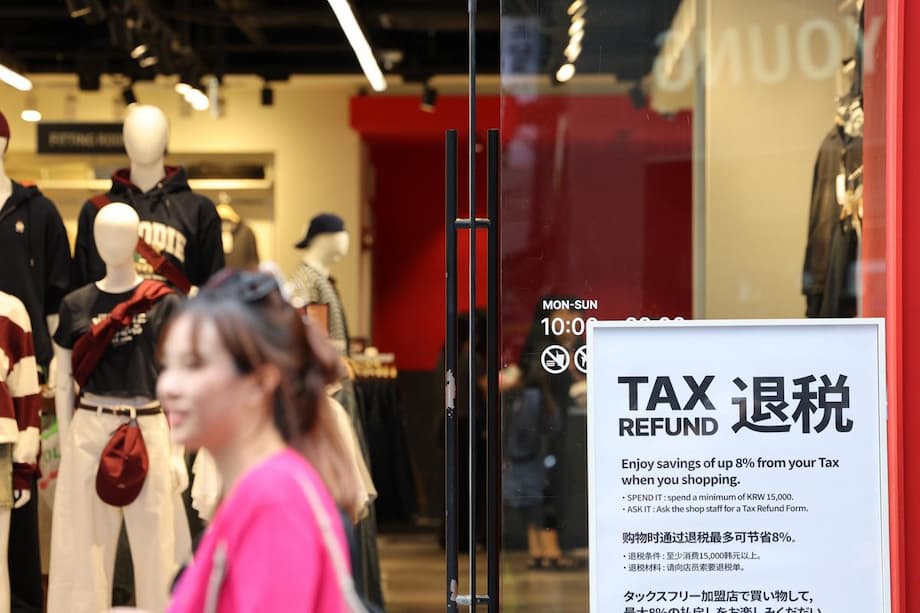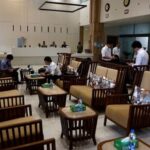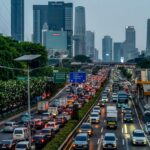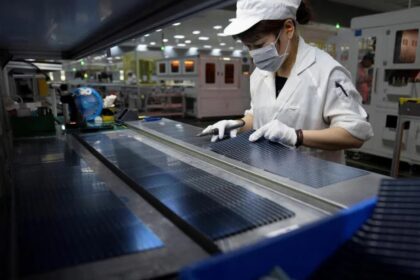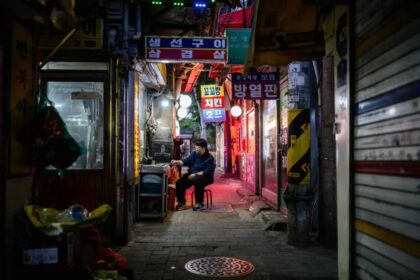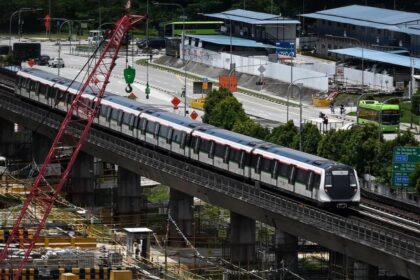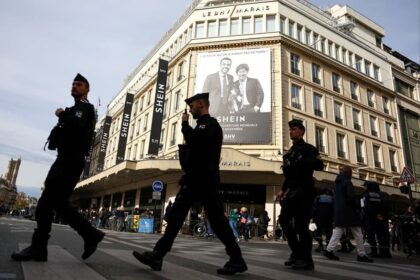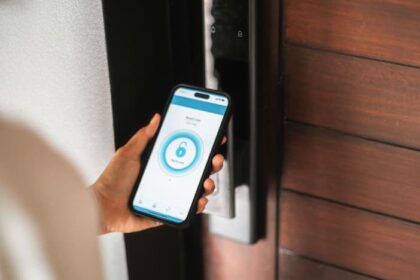A test of tourism and ties as Chinese groups return
South Korea has opened its doors to Chinese group travelers under a new visa waiver, marking the most ambitious restart of inbound tourism from China since the pandemic. Starting September 29, groups of three or more travelers recruited by licensed agencies can enter without a visa and stay for up to 15 days. The measure runs through June 30, 2026, and comes as Gyeongju prepares to host Asia Pacific leaders for the APEC summit in late October. Jeju Island continues to allow both individual and group visitors from China to enter without visas for up to 30 days.
- A test of tourism and ties as Chinese groups return
- What the temporary visa waiver allows
- Early signs from ports and shopping districts
- How big could the rebound be for Korea’s economy
- Security, screening, and public health safeguards
- Politics and diplomacy around the opening
- What to watch during Golden Week and beyond
- Key Points
The government aims to lift consumer demand and speed the recovery of a sector that relies heavily on Chinese travel. Officials expect around 1 million additional Chinese visitors by the end of June next year. Early market reaction has tracked that optimism, with department stores, hotels, casinos, and cosmetics makers gaining ground as investors bet on stronger sales. The policy also aligns with a shift in relations between Seoul and Beijing, following China’s earlier move to allow short stays for South Korean visitors without visas.
What the temporary visa waiver allows
The program is tightly defined to manage flows and keep screening in place. Chinese nationals may enter in groups of at least three travelers, and only if the trip is arranged through a travel agency designated by the South Korean government. Each entry allows a stay of up to 15 days on the mainland. Jeju maintains its separate policy of up to 30 days without a visa.
Who qualifies and how it works
Licensed agencies must submit traveler information 24 to 36 hours before arrival through the HiKorea system. The data, including names, passport numbers, and accommodation addresses, is checked against prior immigration violations and Interpol notices. Agencies are penalized if customers overstay. If more than 2 percent of a given agency’s clients fail to depart on time, the agency loses the right to host visa waiver groups. Authorities say this structure is designed to widen access for legitimate tour groups without weakening enforcement.
Why now
South Korea’s decision follows China’s move late last year to allow short stays for South Koreans without visas and arrives just ahead of China’s National Day holiday week in October. That timing is critical for travel demand. It also lands before a busy stretch of South Korean holidays and the APEC gathering, which together create a window to capture curiosity, fill hotel rooms, and spotlight Korean retail districts.
Early signs from ports and shopping districts
The first wave brought vivid scenes at ports and shopping hubs. A cruise liner, the MS Dream, arrived in Incheon with 2,189 passengers and 563 crew, signaling a restart in cruise itineraries between Tianjin and the Seoul region. Local authorities staged welcome events and food trucks at the port while tour operators dispatched buses to major sites in Seoul.
Central Seoul saw brisk traffic as group visitors headed to duty free stores, beauty retailers, and trendy apparel outlets. Crowds formed at Lotte Duty Free’s Myeong dong flagship and at Shilla’s store in Jangchung dong, where staff greeted passengers with flowers and promotions on cosmetics and skincare. Older travelers gravitated toward red ginseng and supplements, while younger shoppers filled baskets with K beauty brands and fashion labels. Retailers say the early momentum will build through Golden Week. Lotte expects more than 10,000 group visitors to its stores in Seoul, Busan, and Jeju next month.
Retailers and hotels line up promotions
Major brands rolled out targeted deals to capture this spending:
- Jeju Dream Tower Integrated Resort offers restaurant and spa discounts tied to WeChat Pay.
- Shinsegae Duty Free distributes bags featuring the Chinese character for luck, issues WeChat Pay cashback, and provides food delivery coupons for groups.
- Lotte Department Store gives keychains and string bags to Chinese customers.
- GS25 runs discounts and prize events for Alipay users, and some stores host themed pop ups built around K Pop content.
- CU promotes its Myeong dong Subway Station store as a K food showcase.
- CJ Olive Young expands foreign language staff and adds instant VAT refund terminals in key districts.
- Musinsa offers discounts and digital coupons via Alibaba’s Tmall to reach Chinese shoppers before and during their trips.
- Daiso broadens K beauty and snack assortments in tourist heavy areas.
The promotions aim to convert foot traffic into larger baskets and repeat visits, especially in categories where Chinese demand has traditionally been strong, such as cosmetics, fashion accessories, and health products.
How big could the rebound be for Korea’s economy
China has long been the top source of visitors to South Korea. Officials say about 2.5 million Chinese nationals arrived in the first half of the year, and in July foreign arrivals reached more than 1.73 million. Of those July visitors, 602,147 came from China, or 34.7 percent, which was up 31.2 percent from a year earlier. The visa waiver could accelerate that trend through mid 2026. The program also targets travelers beyond the largest Chinese cities by simplifying group entries, which can help airlines and cruise lines fill schedules that have lagged behind regional peers.
Consumer facing companies have positioned for a lift. The cosmetics sector, duty free operators, hotel chains, and department stores have often tracked Chinese demand. Equity investors, watching past recoveries, pushed shares in these sectors higher on expectations of stronger inbound spending. Department store operators and airport retailers are also tuning staff rosters, inventory plans, and digital payment systems to absorb surges during Golden Week and peak weekends.
Cruise and air travel outlook
Passenger shipping companies view the visa waiver as a signal to rebuild routes between Chinese ports and Incheon, Busan, and Jeju. The early arrival of Tianjin Orient International Cruise Line at Incheon suggests interest is real. Port authorities plan more shore services and quick tour itineraries to spread passengers across museums, palaces, and shopping districts. Airlines are also expected to add capacity from second tier Chinese cities where visa processing has often been a bottleneck. If the itineraries stick, Korea’s regional cities could benefit from multi stop trips that include provincial destinations as well as Seoul.
Security, screening, and public health safeguards
Public debate has sharpened around safety issues, yet the gatekeeping mechanisms for group entries are more stringent than many casual travelers expect. The Ministry of Justice says visa waiver entries operate through HiKorea, a separate system that remained active despite recent technical incidents affecting other platforms. Agencies must submit traveler manifests well in advance. Each name is checked for prior immigration violations and serious flags, including Interpol notices. Overstays can trigger penalties for the traveler and sanctions for the agency, which can lose access to the program if repeated problems occur.
Disease concerns and official data
Social media claims that visa free travelers will bring new waves of infectious disease have circulated, but epidemiological data do not support that picture. The Korea Disease Control and Prevention Agency reports that between 2013 and July of this year, 71 imported cases of chikungunya were identified in Korea and none traced to China. Most came from Southeast Asia. Public health authorities recommend standard preventive steps for mosquito borne illnesses and maintain surveillance at ports of entry. These facts do not point to elevated medical risk tied to the new group entries.
Crowd management and policing as protests flare
Anti China protests have grown in parts of Seoul, including Myeong dong and Daerim dong, driven by right wing groups after a period of political controversy. The Chinese Embassy in Seoul issued guidance urging citizens to stay vigilant, avoid political gatherings, and refrain from public political statements while traveling. President Lee Jae Myung asked for countermeasures to protect visitors and the public, and Prime Minister Kim Min seok directed police to maintain order and support merchants, residents, and Chinese nationals in neighborhoods affected by protests. These steps reflect a desire to separate tourism from political tension and to keep streets safe during peak travel weeks.
Politics and diplomacy around the opening
The return of Chinese group travel coincides with a recalibration in Seoul’s approach to Beijing. The new administration has signaled interest in steadier relations after years marked by disputes over missile defense and pandemic era restrictions. The APEC summit in Gyeongju on October 31 and November 1 offers a forum where regional leaders, including China’s, will share the stage. The visa waiver is pitched as an economic catalyst, yet it also functions as a diplomatic gesture that acknowledges China’s earlier step to ease entries for South Koreans.
South Korea has used visa waivers for Chinese groups during special periods in the past. A short program around the Pyeongchang Winter Olympics from late 2017 to early 2018 helped draw visitors to venues and retail corridors. The present initiative is wider in scope and longer in duration. It aims to kick start tourism revenues while maintaining immigration controls through agency accountability and digital checks. The test will be whether those controls, the police posture at protests, and the posture of local communities can keep the welcome mat out without sparking friction.
What to watch during Golden Week and beyond
Travel patterns during China’s National Day holiday week will set the tone. If cruise calls increase and group bookings stay solid through November, retailers and hotels can plan holiday season staffing with more confidence. Payment data from Alipay and WeChat Pay, foot traffic in Seoul’s retail core, and hotel occupancy in both capital and provincial cities will hint at the staying power of this return. At the same time, immigration statistics on overstays and police reports from protest hot spots will shape public debate and determine whether the program becomes a template for future easing.
Analysts will also watch how much of the spending occurs in duty free stores versus street level merchants. Visa waiver groups often move on tight schedules that favor big operators, so city governments and business associations are working on routes that include traditional markets and cultural sites. That distribution will decide how widely the benefits reach, from large chains to small shop owners.
Key Points
- South Korea now allows Chinese group tours, with groups of at least three traveling through licensed agencies, to enter without visas for up to 15 days through June 30, 2026.
- Officials expect around 1 million additional Chinese visitors by the end of June next year, with Jeju continuing its separate 30 day entry without visas.
- Early arrivals included a cruise ship at Incheon with 2,189 passengers and 563 crew, and heavy foot traffic at duty free stores and beauty retailers in central Seoul.
- Major brands launched promotions tied to Alipay and WeChat Pay, expanded language support, and added instant VAT refunds to capture new spending.
- Immigration controls use the HiKorea system, require advance passenger data, and penalize agencies if more than 2 percent of their clients overstay.
- Health authorities report no evidence that the policy raises infectious disease risk, with past chikungunya cases tracing to Southeast Asia rather than China.
- Protests in some Seoul districts prompted a caution notice from the Chinese Embassy and police directives from the South Korean government to keep order.
- The program aligns with APEC in Gyeongju and a thaw in ties with Beijing, and could widen cruise and air links from Chinese cities beyond the largest hubs.


